.
7.08.2014
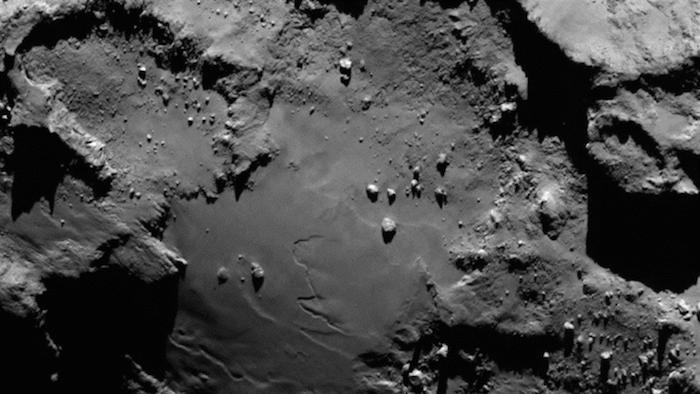
Der Anfang einer engen Beziehung: Erfolgreiches Rendezvous mit Komet Churyumov-Gerasimenko
Über 6,4 Milliarden Kilometer hat die ESA-Raumsonde Rosetta zurückgelegt, hat an Planeten Schwung geholt, zwei Asteroiden im Vorbeiflug angeschaut und von der zehnjährigen Flugzeit mehr als zweieinhalb Jahre im Sparmodus verschlafen - am 6. August 2014 kam sie mit Lander Philae an Bord um 11:30 Uhr mitteleuropäischer Zeit an ihrem Zielkometen an und beginnt ihn zu umkreisen. Nun startet die Kartierung des Kometen, der anscheinend aus zwei miteinander verbundenen Teilen besteht: Am 11. November 2014 wird dann die erste Landung überhaupt auf einem Kometen erfolgen. Landegerät Philae wird dabei aus dem Lander Control Center des Deutschen Zentrums für Luft- und Raumfahrt (DLR) gesteuert und betrieben.
Zeitzeuge aus der Vergangenheit
404 Millionen Kilometer ist die Raumsonde nun von der Erde entfernt. Schon während des Anflugs hat Churyumov-Gerasimenko für Überraschungen gesorgt: Statt eines kartoffelförmigen Körpers blickten die Kometenforscher auf einen Körper, der ähnlich wie eine Ente aus Kopf und Körper bestand. Die erste Temperaturmessung zeigte dann, dass auf Lander Philae kein Komet mit viel Eis, sondern mit einer staubigen und wahrscheinlich sehr rauen Oberfläche wartet. "Mit der Ankunft am Kometen werden wir jetzt aus 100 Kilometern Höhe noch deutlich mehr über Churymov-Gerasimenko erfahren", sagt Kometenforscher Dr. Ekkehard Kührt vom DLR-Institut für Planetenforschung, "Spannend und einmalig sind vor allem die ausgiebigen Untersuchungen aus der nahen Distanz."
Elf Instrumente REISEN auf der Raumsonde Rosetta mit, zehn Instrumente befinden sich an Bord von Lander Philae und werden die ersten Daten direkt von einer Kometenoberfläche aus liefern. Bodenbeschaffenheit, Temperatur, physikalische Zusammensetzung des Kometenkerns, organische Moleküle - alles ist für die Kometenforscher interessant, denn Churyumov-Gerasimenko, der aus Eis und Staub besteht, ist sehr wahrscheinlich aus besonders ursprünglichen Material gebildet, das sich bei seinem Flug durch die kalten Regionen des Sonnensystems weniger verändert hat als andere Himmelskörper: "Wir begegnen einem Zeitzeugen aus der Entstehung unseres Sonnensystems vor 4,5 Milliarden Jahren", sagt DLR-Forscher Dr. Ekkehard Kührt. "Kometen haben die Vergangenheit wie ein Kühlschrank in gefrorenem Zustand konserviert und tragen dadurch noch viele Merkmale aus den Anfängen des Sonnensystems in sich. Allerdings kann man auf den ersten Bildern erkennen, dass auch am Kometen die Zeit nicht spurlos vorbei gegangen ist", betont Kührt. "Zahlreiche exotische Strukturen auf der Oberfläche deuten auf eine gewisse Entwicklung hin, die es nun zu verstehen gilt." Außerdem könnten Kometen und ihre Einschläge dafür gesorgt haben, dass Wasser und Moleküle für die Entstehung von Leben zur Erde gelangten.
Die Suche nach dem perfekten Landeplatz
Nun beginnt die Landeplatzauswahl, bei der auf dem entenförmigen Körper für Landegerät Philae mit den Daten der Kameras und der anderen wissenschaftlichen Instrumente die rechte Stelle ausgesucht wird. Dabei müssen zahlreiche Kriterien berücksichtigt und manchmal auch der goldene Mittelweg gefunden werden. "Wir benötigen zum Beispiel einerseits Sonne, damit die Batterien mit den Solarzellen immer wieder aufgeladen werden können, andererseits darf der Komet an seiner Oberfläche nicht schon zu heiß sein und zu stark ausgasen", erläutert DLR-Wissenschaftler Dr. Stephan Ulamec, Leiter der Lander-Teams. Rund 450 Millionen Kilometer Entfernung von der Sonne sind dafür günstig. Aber auch Rauigkeit der Oberfläche und die Beschaffenheit des Bodens sind entscheidend für eine sichere Landung. Nicht zuletzt ist eine gute "Sichtverbindung" zur Raumsonde ROSETTA wichtig, um die gemessenen Daten der zehn Instrumente regelmäßig über diese Verbindung zur Erde zu funken und vom Lander-Kontrollzentrum im DLR Köln Kommandos an den Lander zu senden.
Ende August wird eine erste Auswahl stattfinden, bei der Wissenschaftler und INGENIEURE des DLR und weitere Partner des Lander-Konsortiums unter Leitung des DLR bis zu fünf mögliche Landestellen festlegen. "Günstige Gebiete für eine Landung befinden sich am Kopf sowie zum Teil auf dem größeren Kometenteil - der schmale Grat fällt eher heraus", sagt Lander-Projektleiter Stephan Ulamec. Mitte September werden dann aus diesen "Top Five" die beiden besten Landeplätze herausgefiltert. Mitte Oktober - ein Monat vor der Landung - fällt dann die Entscheidung, an welchem Ort auf Churyumov-Gerasimenko das Landegerät Philae aufsetzen soll.
Warten auf das erste Signal von der Kometenoberfläche
Da die Laufzeit der Kommandos 30 Minuten von der Erde zu Sonde und Lander dauern, werden die Ingenieure beim Landevorgang selbst nicht mehr eingreifen können. Stattdessen wird wenige Stunden, bevor Philae von Rosetta aus wenigen Kilometern Höhe getrennt wird, von den DLR-Ingenieuren eine Computersequenz für den Abstieg und die Landung an die Raumsonde gesendet. Mit gerade einmal etwa mehr als drei Stundenkilometern sinkt Philae dann auf den Kometen hinunter. Damit er dort aufgrund der geringen Anziehungskraft von Churyumov-Gerasimenko nicht gleich wieder abprallt, werden unverzüglich zwei Harpunen in den Kometenboden gefeuert, die den Lander auf dem kleinen Himmelskörper verankern. Zusätzlich drehen sich Eisschrauben in den Füßen des Landegeräts in den Boden, und eine Kaltgasdüse an der Oberseite von Philae drücken den Lander sanft in Richtung Komet. "Ob alles gut verlaufen ist, erfahren wir erst 30 Minuten nach der Landung, wenn wir im Kontrollzentrum die Daten erhalten", sagt Dr. Stephan Ulamec. Auch die ROLIS-Kamera des DLR, die an der Unterseite des Landers sitzt, wird dann ihre ersten Bilder vom Abstieg des Landegeräts senden.
Quelle: DLR
.
COMETWATCH – 5 & 6 AUGUST
The daily navigation camera (NAVCAM) images continue, and now that ROSETTA is so close to comet 67P/C-G, the nucleus is very well visible in the full-frame images from 5 and 6 August 2014.
NAVCAM image from 6 August, taken at about 96 km from the comet.
.
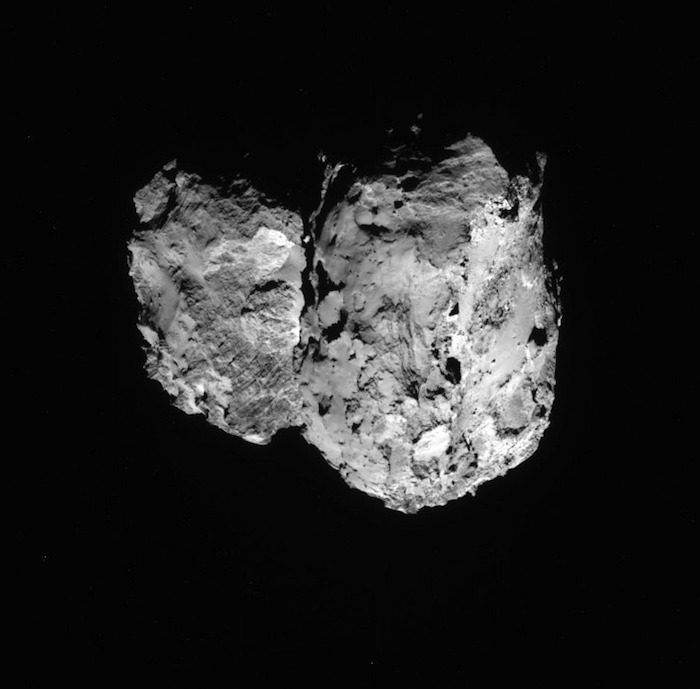
Full-frame NAVCAM image taken on 6 August 2014 from a distance of about 96 km from comet 67P/Churyumov-Gerasimenko. Credits: ESA
.
And a catch-up from 5 August too: NAVCAM image taken at about 145 km from 67P/C-G.
.
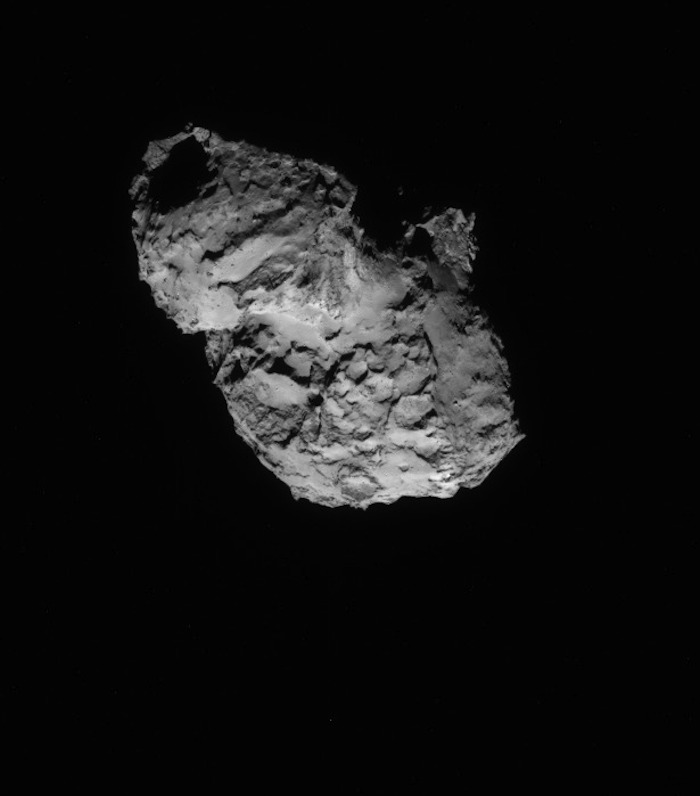
Full-frame NAVCAM image taken on 5 August 2014 from a distance of about 145 km from comet 67P/Churyumov-Gerasimenko. Credits: ESA
.
Some of the instruments on board ROSETTA have already started to produce scientific results. During yesterday's afternoon session at ESOC, Darmstadt, we heard about these from the principal investigators of VIRTIS and MIRO.
Mark McCaughrean, Senior Scientific Advisor for ESA's Directorate of Space and Robotic Exploration, who moderated the afternoon session, described these first results as “a gateway to the great science that is going to come in the next months.”
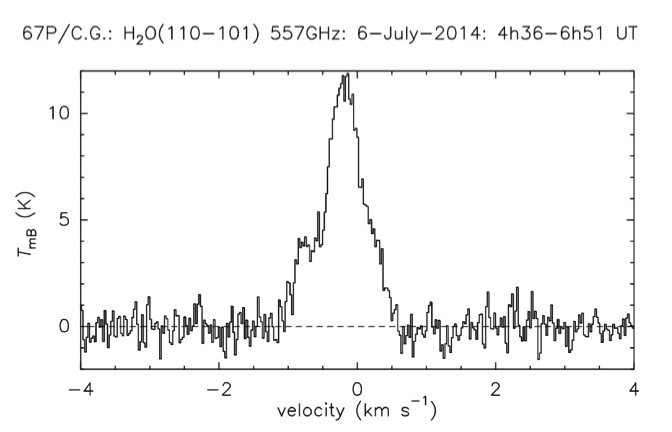
Raumfahrt
First measurements from the Visible and Infrared Thermal Imaging Spectrometer (VIRTIS) on board Rosetta have been probing the surface temperature on the nucleus of comet 67P/C-G. The Principal Investigator of VIRTIS, Fabrizio Capaccioni, explained how the measurements became increasingly more precise as Rosetta approached the comet.
On 14 July, the entire surface of the comet occupied one of VIRTIS's pixels, allowing the scientists to estimate the mean temperature of the nucleus – around 205 K. While this may seem rather cold, it is somehow warmer than the scientists expected, providing the scientists with some first clues on the composition and the physical properties of the surface of the nucleus. More about these early results here.
Within only a couple of weeks, however, the situation changed dramatically for VIRTIS: on 29 July, the resolution had increased to slightly less than 500 m per pixel. With these data, it is possible to map temperature variations on the comet's nucleus: in the hottest regions, the maximum temperature is even higher than the previous data had suggested, up to 220 K.
Capaccioni explained how such a high temperature suggests that the surface of 67P/C-G's nucleus is devoid of volatiles, because these compounds are not capable of removing heat. This also indicates that the thermal conductivity through the upper layers of the nucleus is limited, pointing to a porous surface.
As well as this, the VIRTIS data seem to show a modulation of temperature as the comet's nucleus rotates, as shown in this video. Differences in temperature on the surface of the nucleus could be due to variations of the chemical composition, to different illumination, or to variations of other physical properties. This will be investigated in greater detail as VIRTIS will collect more and even better data.
Observing at even longer wavelengths, the Microwave Instrument for ROSETTA Orbiter (MIRO) also studies the thermal properties of the comet's nucleus and environment.
Sam Gulkis, the Principal Investigator of MIRO, explained how this small telescope is designed to study the development of the comet's coma by MONITORINGthe heat transfer inside the nucleus and how heat comes off when the comet approaches the Sun. At each pass by the Sun, a comet releases some of its heat – Gulkis compared it to a snake shedding its skin every year.
MIRO can also take spectra, seeking for the signatures from a variety of molecules – most importantly, water. To stress the importance of comets to study the history of this fundamental molecule in the SOLAR SYSTEM, Gulkis walked into his presentation carrying a glass of water!
The first measurement of water outgassing from the comet's nucleus was obtained with MIRO in June, even earlier than the scientists had expected to first detect it. Ever since, they've detected water in all the subsequent observations. More on the first detection of water here.
So far, MIRO has measured global properties of the coma and nucleus, but now that ROSETTA is closer to the comet, it is possible to resolve the nucleus. This will allow a more detailed mapping of the temperature, especially at potential landing sites. The team will also look for lines from other molecules, such as carbon monoxide, ammonia and methanol; these will also improve the temperature estimates of the nucleus and coma.
.

An emission line from water detected with MIRO. The peak is offset with respect to zero towards the negative side: this blueshift is due to the water outgassing from the comet and moving towards the spacecraft. From S. Gulkis's presentation.
.
The final presentation was given by Holger Sierks, Principal Investigator of OSIRIS, who unveiled the latest images of the comet's nucleus that were downloaded during the morning session. The images don't lie: ROSETTA has indeed arrived at Comet 67P/C-G!
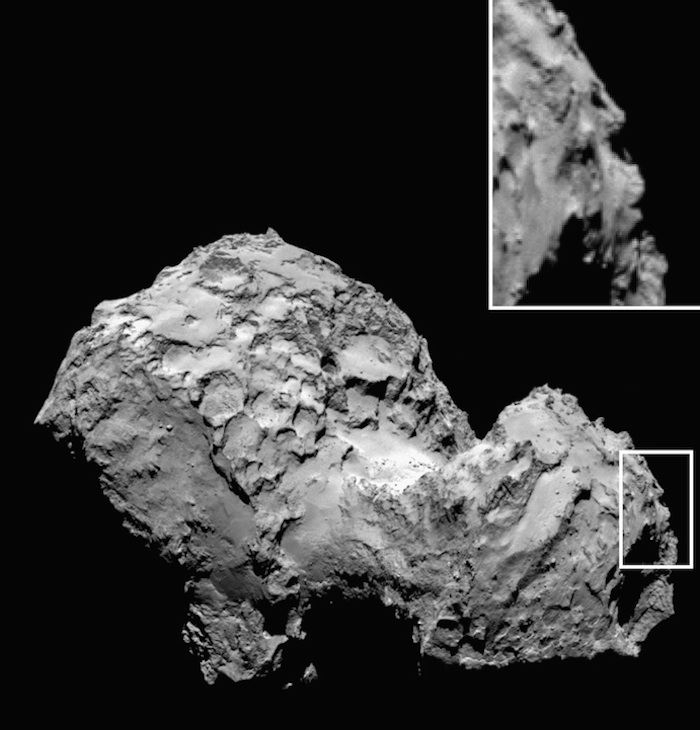
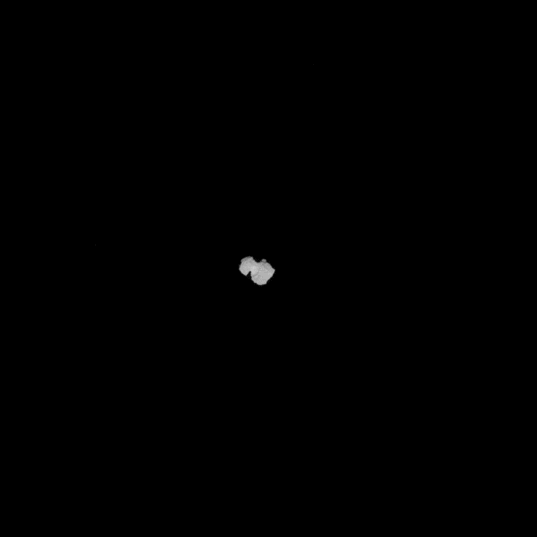
Zooming into these stunning images from the OSIRIS narrow-angle camera reveals an incredible amount of structure: boulders and cliffs, FLATand smooth areas, and a variety of topographical features. This is the first high-resolution view ever obtained of a cometary nucleus.
Sierks also showed how combining images taken at different wavelengths can reveal an even greater degree of detail, enabling scientists to correlate structures on the nucleus with the comet's activity observed at large. The team is now looking forward to even higher resolution images and to the excitement of the coming weeks as Rosetta gets closer and closer to the comet.
Quelle: ESA
.
'Face' on Comet 67P Spotted by Rosetta Spacecraft (Photo)

German Aerospace Center's youth portal DLR_next tweeted this photo showing the "face" on Comet 67P/Churyumov-Gerasimenko, Aug. 6, 2014.
.
If you're a fan of the "Face on Mars," then you might just have a new best friend. A new photo from Europe's ROSETTA spacecraft has captured what appears to be a face on a comet in deep space, even if it's only a fun optical illusion.
ROSETTA captured the photo of Comet 67P/Churyumov-Gerasimenko on Sunday (Aug. 3) while en route to its historic arrival at the comet earlier today (Aug. 6). The image shows the 2.5-mile-wide (4 kilometers) comet in its entirety, with the face illusion visible on the right side of the comet.
Officials with the German Aerospace Center's youth portal DLR_next (@DLR_next) spotted the optical illusion and pointed it out on Twitterwith several tongue-in-cheek posts today. DLR is one of the European Space Agency members participating in the Rosetta comet-chasing mission.
Seeing faces in space photos is nothing new. They are examples of pareidolia, in which the human brain perceives faces, animals or other shape patterns in random images.
A photo taken by NASA's Viking 1 Mars orbiter in 1976 sparked infamous claims of a "Face on Mars." Subsequent observations by other spacecraft, like NASA's Mars Global Surveyor and Europe's Mars Express, have proven the Face on Mars was just a trick of light and shadows.
Other examples of false sightings in space include a rat on Mars, an alien Bio Base and — most recently — a strange flash of light captured by NASA's Curiosity rover.
Rosetta arrived at Comet 67P/C-G (as it is known) after a 10-year and 4-billion-mile chase (6.4 billion km) across the SOLAR SYSTEM. The probe has already begun snapping stunning close-up photos of the comet.
ROSETTA is the first spacecraft ever to orbit a comet and will spend the next year and a half studying Comet 67P/C-G in extraordinary detail. In November, Rosetta is expected to drop its lander Philae onto the comet's surface for an even closer look.
Quelle: SC
.

NavCam animation of comet Churyumov-Gerasimenko, August 1-6, 2014
This animation comprises 86 images acquired by the Navigation Camera on board ESA's Rosetta spacecraft as it approached comet 67P/Chuyrumov-Gerasimenko in August 2014. The first image was taken on 1 August at 11:07 UTC, at a distance of 832 km. The last image was taken 6 August at 06:07 UTC (08:07 CEST) at a distance of 110 km. The comet's slew out of the field of view resulted from a small error in a trajectory correction burn that was corrected in the next one.
Quelle: ESA
.
Update: 8.08.2014
.
'We're in orbit!' Rosetta becomes first spacecraft to orbit comet
After a 10-year chase taking it billions of miles across the SOLAR SYSTEM, the Rosetta spacecraft made history Wednesday as it became the first probe to rendezvous with a comet on its journey around the sun.
"Thruster burn complete. Rosetta has arrived at comet 67P. We're in orbit!" announced the European Space Agency, which is leading the ambitious project, on Twitter.
Rosetta fired its thrusters on its final approach to Comet 67P/Churyumov-Gerasimenko, known as "Chury" for short, on Wednesday morning. Half an hour after the burn, scientists announced that the craft had entered into the orbit of the streaking comet.
"After 10 years, five months and four days travelling towards our destination, looping around the sun five times, we are DELIGHTEDto announce finally 'we are here'," said Jean-Jacques Dordain, ESA's Director General, in a statement.
"Europe's Rosetta is now the first spacecraft in history to rendezvous with a comet, a major highlight in exploring our ORIGINS. Discoveries can start."
ESA tweeted a photo of the comet after Rosetta's maneuver. Chury and the space probe now lie some 250 million miles from Earth, about half way between the ORBITS of Jupiter and Mars, according to ESA.
The first spectacular and detailed images taken from just 80 miles away shows boulders, craters and steep cliffs and are already causing excitement.
"Churyumov-Gerasimenko looks like it's been through the wars!" said Dr Robert Massey of the Royal Astronomical Society in the UK.
"With that odd looking 'neck', either we're looking at two objects that merged together or so much material has been lost in its many passes around the sun that the comet is a shadow of what it started out as.
"The pictures coming back so far look intriguing -- and imagine the kind of scenes we can expect when Philae lands this coming November," he said.
To get to its destination the spacecraft has covered more than three billion miles and as the comet hurtles towards the sun it will reach a speed of about 62,000 miles per hour.
The mission has now achieved the first of what it hopes will be a SERIES of historic accomplishments. In November mission controllers aim to place the robotic lander Philae on the surface -- something that has never been done before.
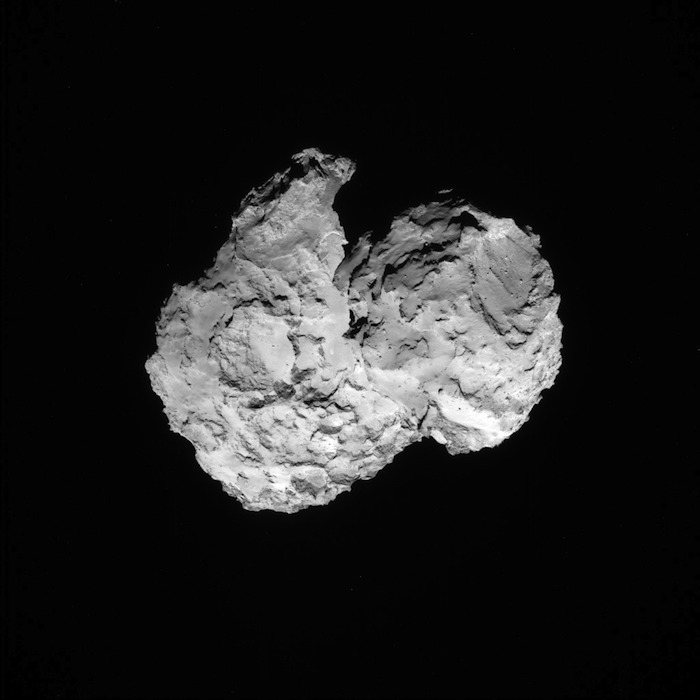
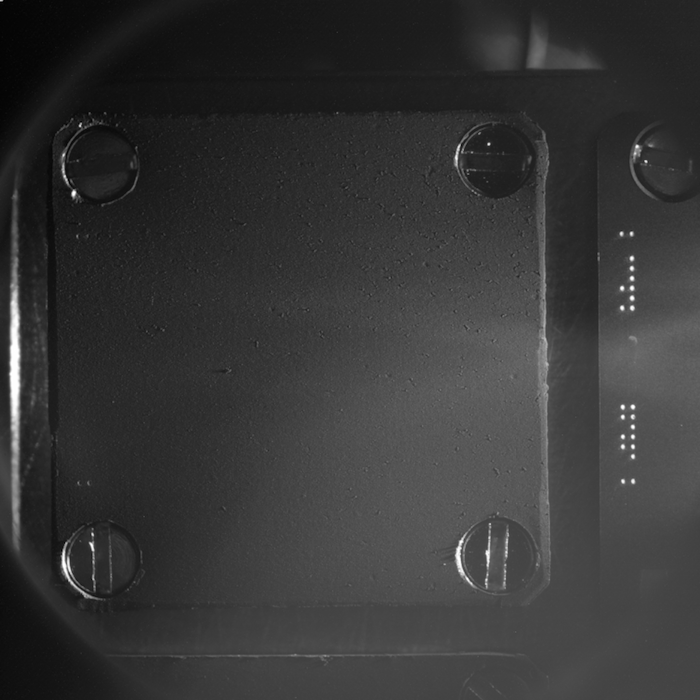

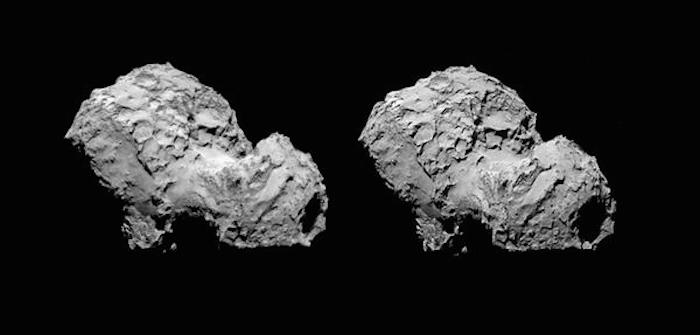
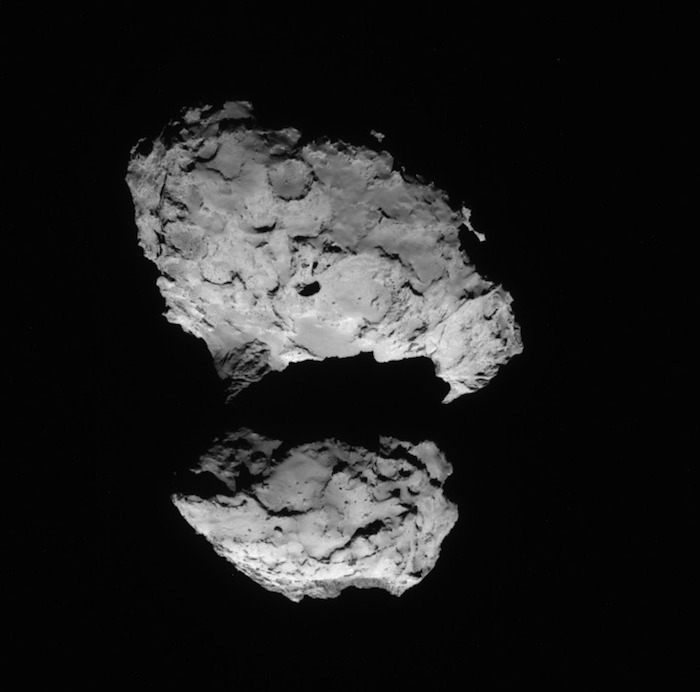
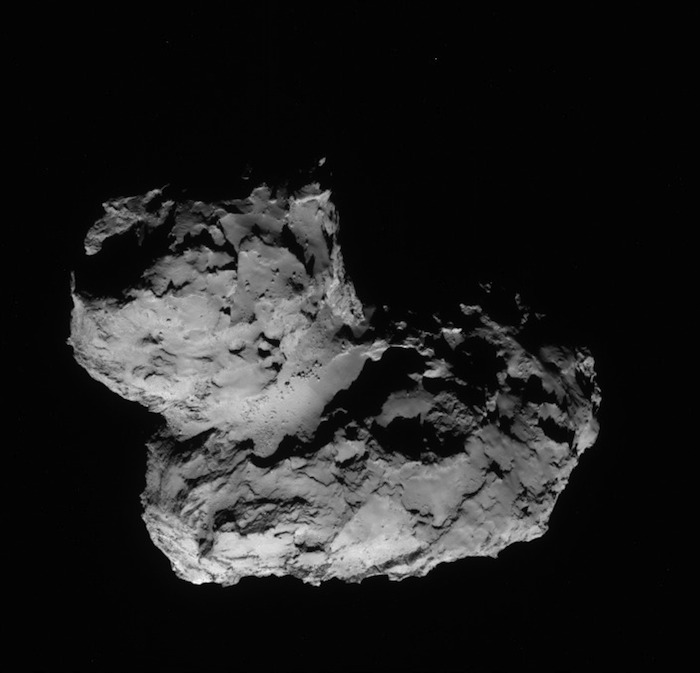

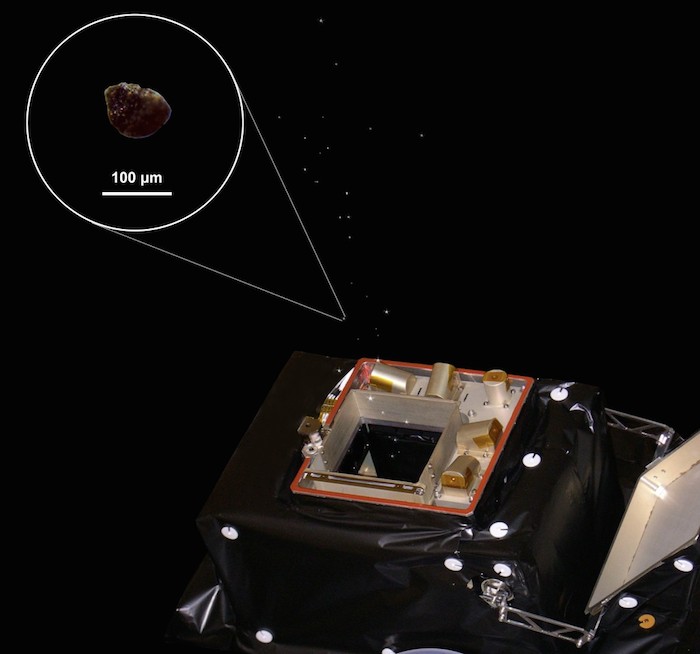
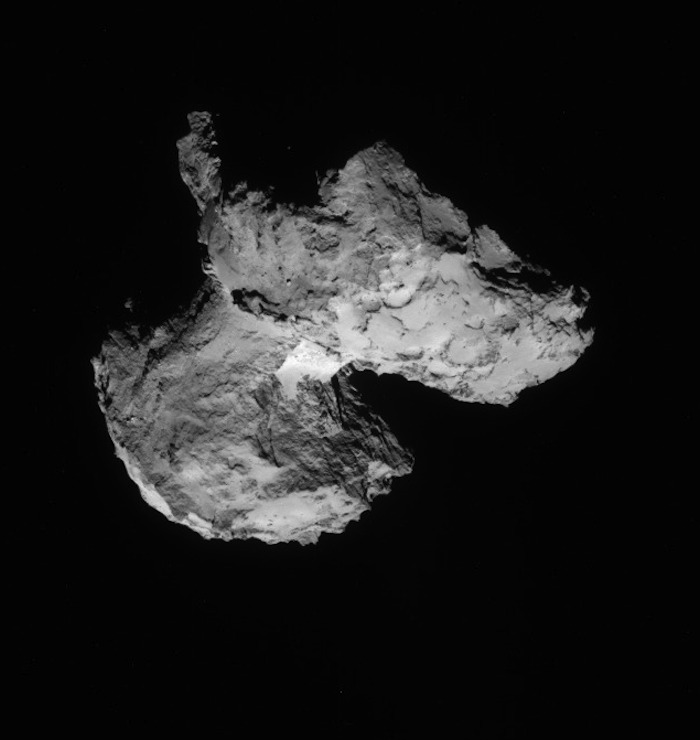

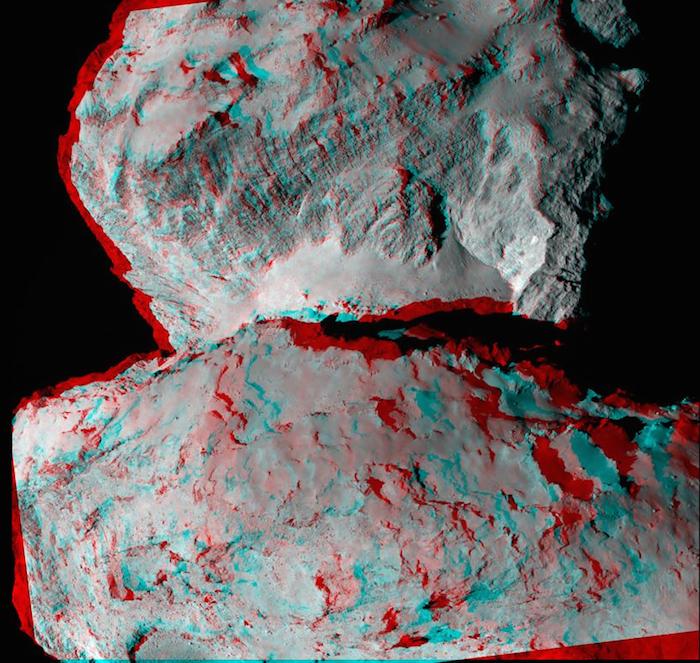
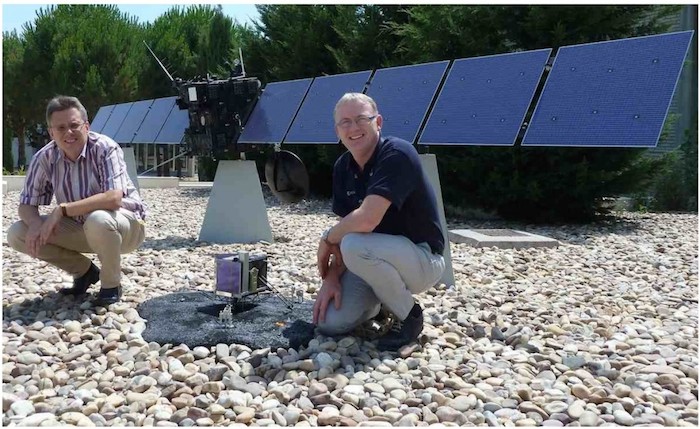
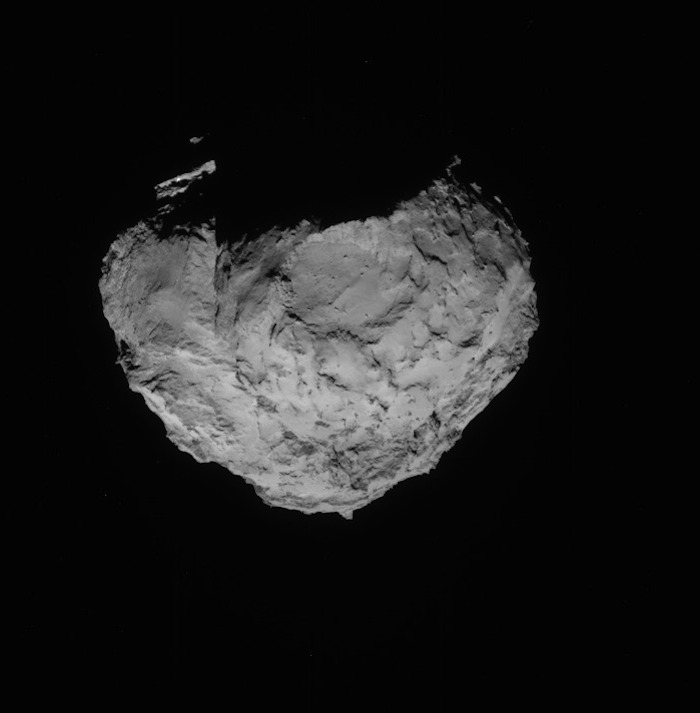
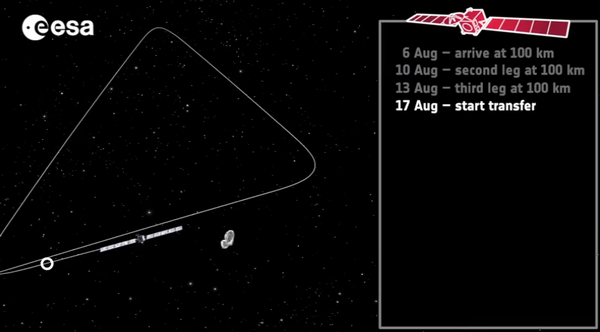
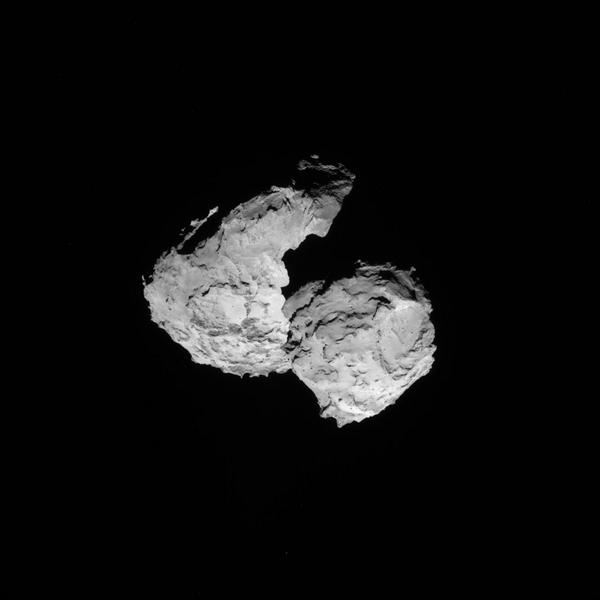
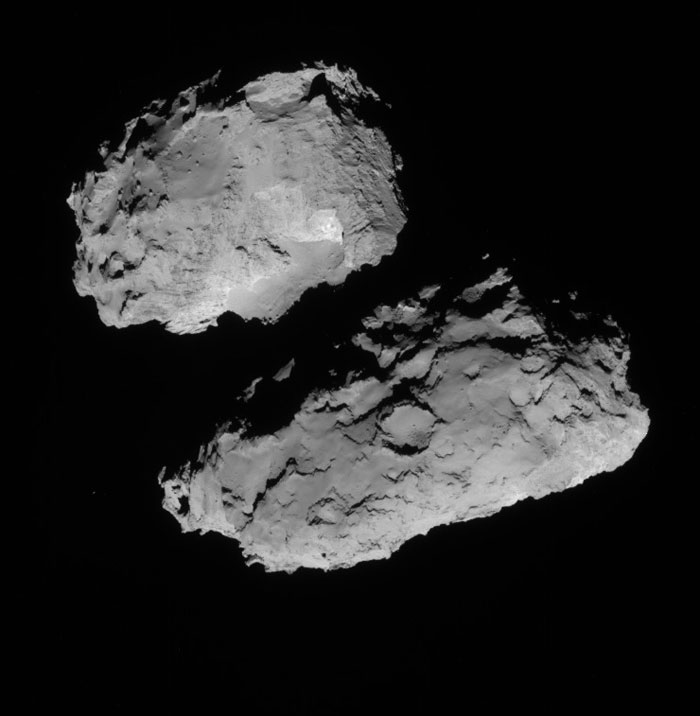
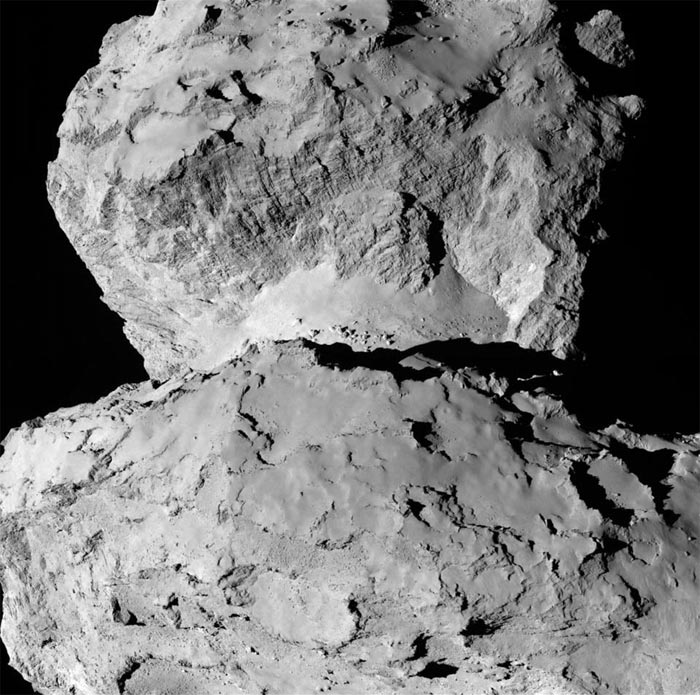
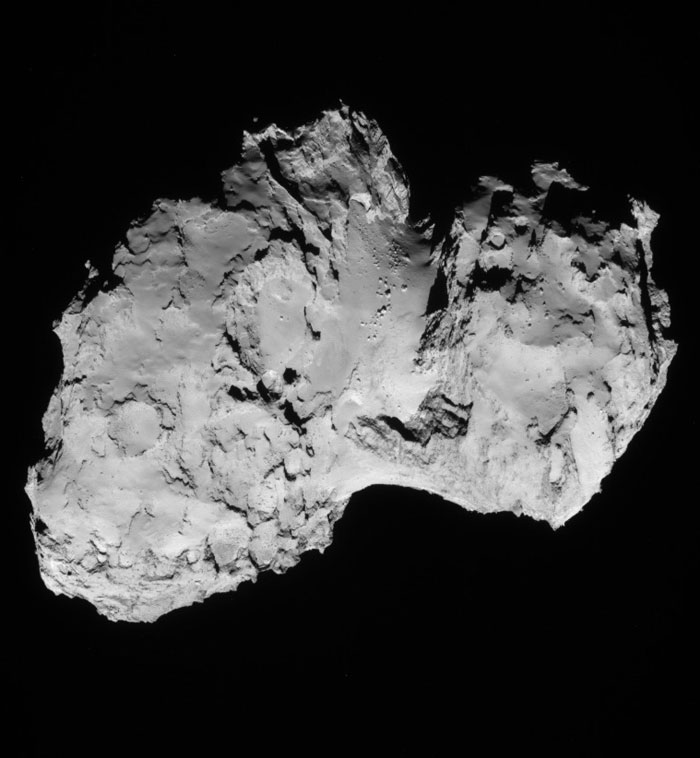
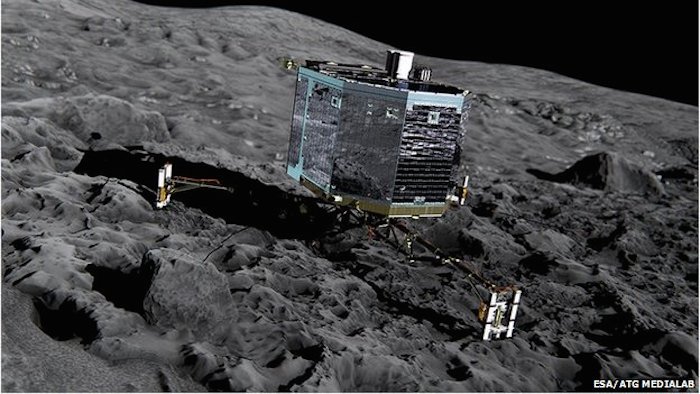
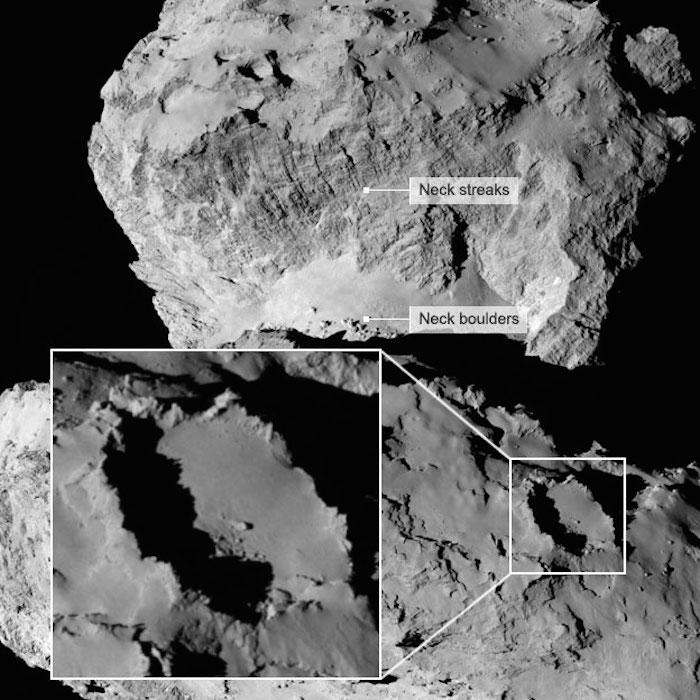
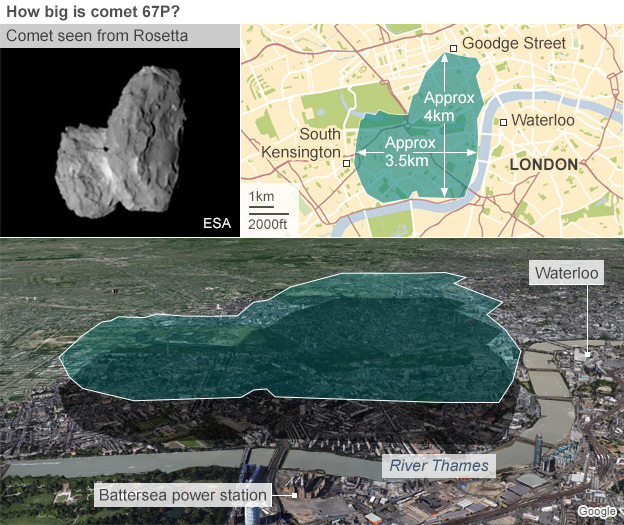

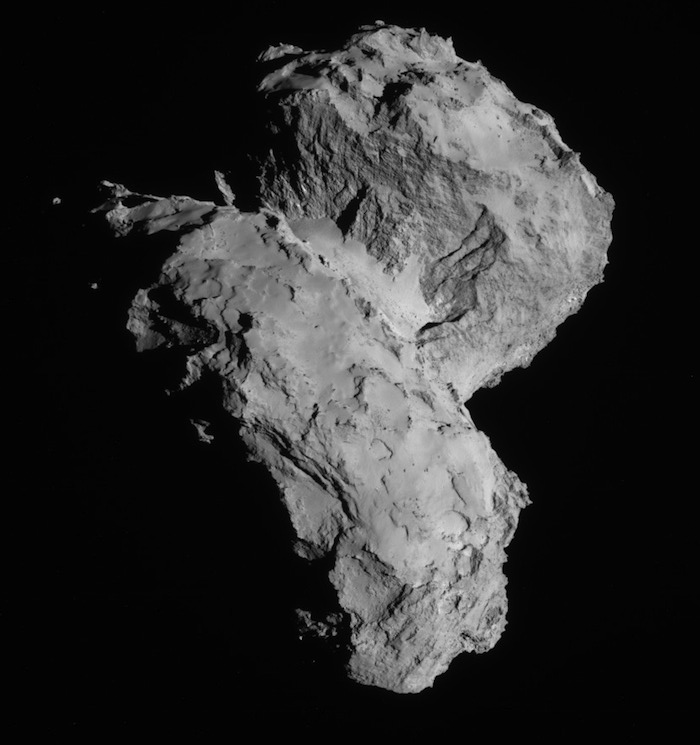
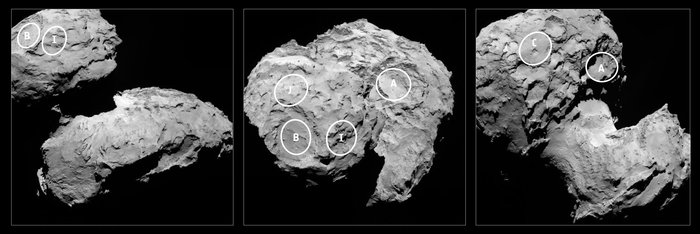
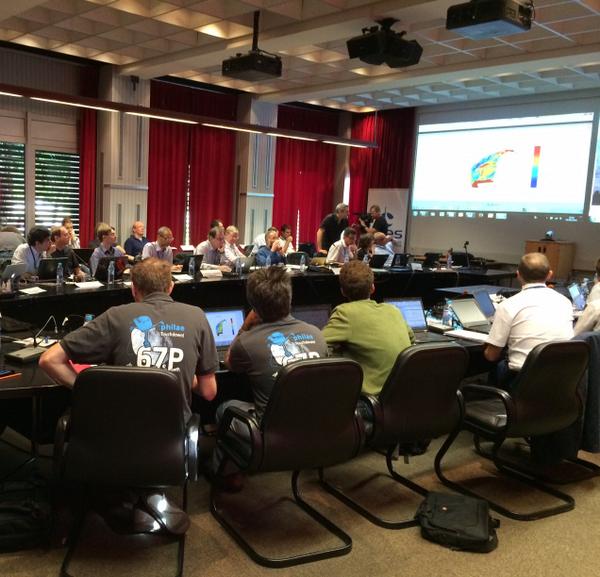
The mission has now achieved the first of what it hopes will be a SERIES of historic accomplishments. In November mission controllers aim to place the robotic lander Philae on the surface -- something that has never been done before.
To send a probe on a 10-year mission, fly past the Earth twice, Mars once and an asteroid to boot and then arrive so smoothly is not only ambition FULFILLED but says something great about the engineers and scientists who worked so hard to put this together
Astronomer Robert Massey
Previous missions have performed comet fly-bys but ROSETTA is different. This probe will follow the comet for more than a year, mapping and measuring how it changes as it is blasted by the sun's energy.
Mission controllers had to use the gravity of Earth and Mars to give the probe a slingshot acceleration to meet its target on the right trajectory. Rosetta also had to be put into hibernation for more than two years to conserve power before being woken up successfully in January this year.
Wednesday's thruster burn was the tenth rendezvous maneuver Rosetta has performed since May to get the probe's speed and trajectory to align with the comet's -- and if any of those operations had failed, the mission would have been lost, according to ESA.
Interactive: See how Rosetta chases the comet across the solar system
For the next few weeks, ESA says the spacecraft will be in a triangular ORBIT until it gets to about 18 miles of the surface when it starts its close observations.
Scientists hope to learn more about the composition of comets and perhaps whether they brought water to the Earth or even the chemicals that MAKE UP the building blocks of life.
"It really is such a step forward to anything that has come before," project scientist Matt Taylor told CNN.
ROSETTA will soon begin mapping the surface of and finding out more about its gravitational pull. This will help to find a suitable landing site for Philae and allow engineers to keep Rosetta in the right orbit.
As comets approach the sun, any ice melts and is turned into an ionized GAS tail. The dust produces a separate, curving tail. It's these processes that Rosetta scientists hope to be able to study from close proximity.
It really is such a step forward to anything that has come before
Matt Taylor, Rosetta project scientist
Taylor explained that the SURVEY will show the team what the comet nucleus looks like now and when it gets closer to the sun.
"We'll be able to make a comparison to now, when its relatively inert, to when it's highly active ... making this measurement over a year when we're riding alongside at walking pace and OBSERVING how a comet works and interacts with the sun," he said.
"We are there for over a year to see this complete development to the extent that you may even be able to measure the decrease in the volume of the nucleus ... see how much material has left the comet."
Chury is known as a short-period comet. It reappears every six years as its ORBIT brings it close to the sun. Halley's comet has a period of about 76 years and is not due to return close enough to Earth to be visible until 2061. Others only return after thousands of years.
Quelle: CNN
.
COMETWATCH – 7 AUGUST
Rosetta navigation camera (NAVCAM) image taken on 7 August 2014 at about 83 km from comet 67P/C-G.
.

Full-frame NAVCAM image taken on 7 August 2014 from a distance of about 83 km from comet 67P/Churyumov-Gerasimenko
.
COSIMA REACHES FOR DUST
Now that comet 67P/Churyumov-Gerasimernko is within our reach, Rosetta’s mass spectrometer COSIMA, managed by the Max Planck Institute for SOLAR SYSTEM Research in Germany, is beginning to reach for cometary dust. Literally.
On Sunday 10 August 2014, COSIMA will expose its first of 24 targetholders aiming to collect SINGLE dust particles. This might take a while. After all, from dust particle modeling, 67P/C-G’s coma is still comparable to a high-quality cleanroom. But, as 67P/C-G travels closer to the Sun along its orbit, the comet’s activity will increase and more dust will be within reach. For now, we are planning to keep the target exposed for one month, but checking on a weekly basis if the model predictions are not too low and if we are lucky.
COSIMA’s targets were developed and prepared by the Universität der Bundeswehr in Germany. Each of these targets measures one square centimetre. It consists of a gold plate covered by a 30 µm thick layer of “metal black” (gold in this case), which has a very low albedo due to its high porosity.
Tests in the laboratory have shown that this layer should decelerate and capture cometary dust particles impacting with velocities of ~100 m/s. The grazing incidence illumination by LED’s combined with the very low albedo of the target will provide high contrast for collected cometary grains, in particular if they stick out of the “gold black” layer.
As a reference, an image of this target has been obtained before cometary dust exposure on 19 July 2014 by the COSISCOPE camera, COSIMA’s built-in microscope which was developed by Institut d’Astrophysique Spatiale (CNRS/Université PARIS Sud, France).
The image shows…. well, basically nothing. But that’s the point. We will identify the dust grains we collect on the target’s surface by comparison with this empty target. The COSISCOPE MICROSCOPE will take new images every week from now onwards.
The grains we identify will then be analysed in mid-September, thus providing the first in-situ analysis of cometary grains with a high mass resolution. COSIMA uses the method of Secondary Ion Mass Spectrometry. This means that the dust particles are in for quite a ride! They will be fired at with a beam of Indium ions. This will spark individual ions (we say secondary ions) from their surfaces, which will then be analysed with COSIMA’s mass spectrometer.
All in all, this will help us understand what material cometary dust is made of, and that is the major science goal of COSIMA.
.

COSISCOPE image of the first target taken on 19 July 2014 (before the exposure, on 10 August, for cometary dust collection). The 1x1 cm target consists of a gold plate covered with a thin layer (30 mm) of gold nanoparticles (“gold black”). Illumination is by two LEDs, from the right side in this case. The bright dots on the vertical strip on the right side are used for target identification and for defining the coordinate system.
Quelle: ESA
.
Update: 11.08.2014
.
COMETWATCH – 8 AUGUST
Rosetta navigation camera (NAVCAM) image taken on 8 August 2014 at about 81 km from comet 67P/C-G.
.
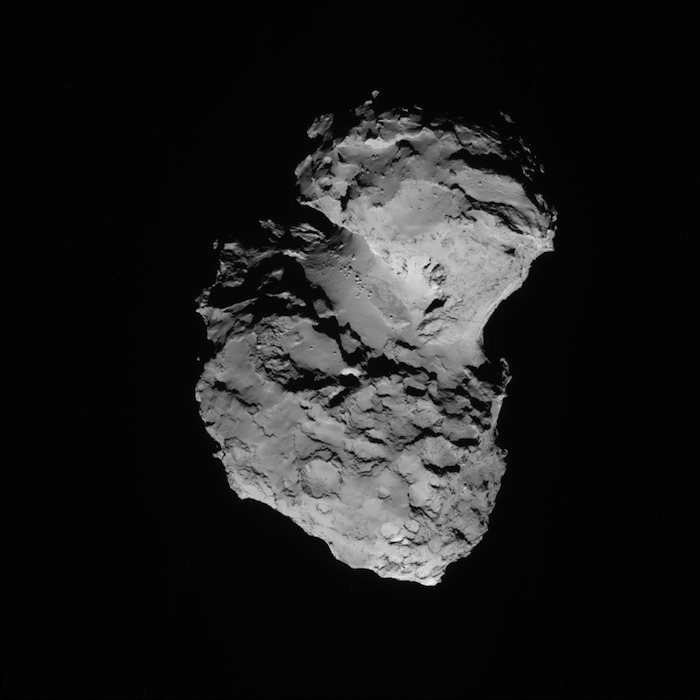
Full-frame NAVCAM image taken on 8 August 2014 from a distance of about 81 km from comet 67P/Churyumov-Gerasimenko
.
COMETWATCH – 9 AUGUST
Rosetta navigation camera (NAVCAM) image taken on 9 August 2014 at about 99 km from comet 67P/C-G.
.

Full-frame NAVCAM image taken on 9 August 2014 from a distance of about 99 km from comet 67P/Churyumov-Gerasimenko
.

We made this @ESA_Rosetta stereo from pics 2 days APART, with a little careful stretching to reduce eyestrain ! Bri
Quelle: ESA
.
Update: 22.40 MESZ
.
COMETWATCH – 10 AUGUST
Rosetta navigation camera (NAVCAM) image taken on 10 August 2014 at about 110 km from comet 67P/C-G. The phase angle is about 45 DEGREES.
.

Full-frame NAVCAM image taken on 10 August 2014 from a distance of about 110 km from comet 67P/Churyumov-Gerasimenko.
Quelle: ESA
.
Update: 13.08.2014
.
COMETWATCH – 11 AUGUST
ROSETTA navigation camera (NAVCAM) image taken on 11 August 2014 at about 102 km from comet 67P/C-G.
.

Full-frame NAVCAM image taken on 11 August 2014 from a distance of about 102 km from comet 67P/Churyumov-Gerasimenko.
Quelle: ESA
.
Update: 14.08.2014
.
ONE YEAR TO PERIHELION!
It’s hard to believe that it’s already been a week since ROSETTA arrived at comet 67P/Churyumov-Gerasimenko! But while the race is now on to map and analyse the comet in order to find a suitable landing site for Philae in November, we’re also looking much further ahead into the mission. That is, to perihelion, exactly one year from now.
Perihelion is the term used to describe the point in an object’s orbit that it is closest to the Sun. For comet 67P/Churyumov-Gerasimenko, the next perihelion passage falls on 13 August 2015, when it is about halfway between the orbits of Earth and Mars, at a distance of about 186 million kilometres (1.24 AU) from the Sun.
.

Screen shot from "Where is ROSETTA?"
.
The image shown here is a screen shot from our popular “Where is Rosetta?” tool, and indicates the relative positions of the comet and spacecraft with respect to Jupiter, the inner SOLAR SYSTEMplanets, and the Sun, today (note the red line shows Rosetta’s ten year journey; in the recently updated version of the tool you can toggle this off). The blue line traces the path of the comet, which is currently between the orbits of Jupiter and Mars. Use the tool to slide through the year and watch how the distances – and speed of the comet (and Rosetta) – change as perihelion approaches.
During this time, the comet will heat up and become more active, THROWING out increasing quantities of gas and dust. Rosetta will continue to accompany the comet even after perihelion, as it moves away from the Sun again, monitoring how its activity decreases and providing unique insight into both daily and long-term changes taking place on and around the comet.
At the same time, the ever-changing activity will make for hugely challenging operations as the team try to keep the spacecraft close enough to the comet to do good science, while ensuring that it remains safe. It’s going to be a quite a ride!
.
GIADA “TOUCHES” THE COMET!
ROSETTA’s Grain Impact Analyser and Dust Accumulator, GIADA, has detected its first dust grains. This is the first time in cometary space exploration that dust has been collected so close to the nucleus and at such large distances from the Sun.
GIADA is one of three instruments on-board Rosetta, along with COSIMA and MIDAS, DESIGNEDto provide information about dust associated with comet 67P/Churyumov-Gerasimenko (follow the links to read earlier blog posts about the roles of COSIMA and MIDAS). GIADA’s role is to measure the number, mass, momentum, and velocity distribution of dust grains in the near-comet environment, as WELL as supporting the characterisation of any dust emitting areas on the surface of the comet.
Comet dust grains are thought be a combination of silicates, organics and some minor constituents. These grains are encased in the various ices of the nucleus and released as the ice sublimates (changes to a gas) when warmed by the Sun. Dust grains form part of the coma around the comet and, later the dust tail.
.

Representation of GIADA collecting comet dust. The inset shows an image taken with a stereo microscope of an analogue dust grain used in the laboratory for GIADA calibration activities. The image was prepared with GIADA consortium material by M. Ferrari and V. Galluzzi. CREDIT: ESA/Rosetta/GIADA/Univ Parthenope NA/INAF-OAC/IAA/INAF-IAPS
.
Earlier this month, GIADA detected the first four dust grains in its Impact Sensor. The first detection was made on 1 August, when ROSETTA was 814 km from 67P/C-G, and about 543 million kilometres from the Sun. Further impacts from three more dust grains were detected on 2, 4, and 5 August, at distances of 603, 286, and 179 km from the comet, respectively.
Many more grains need to be REGISTERED before the coma dust environment can be characterised in any great detail, but a few preliminary calculations can be made based on just these four.
The first impact had a measured momentum of 9.8 x 10–10 (± 1 x 10–10) kg m/s, just above the detection limit of GIADA’s Impact Sensor. In addition, the detection was helped by the relative motion of the spacecraft towards 67P/C-G, which was at about 3.5 m/s at the time, which increased the velocity of the grain relative to the spacecraft. Following rendezvous, the relative velocity is less than 1 m/s, and both comet and ROSETTA are orbiting the Sun at about 15 km/s.
From the measured momentum of the impacts, it was possible to estimate the sizes of the collected grains, which range from a few tens of microns (comparable to the width of a HUMAN HAIR) up to a few hundreds of microns across (about 0.35 millimetres).
Furthermore, based on this very preliminary analysis, the dust environment of the comet in its current location from the Sun seems to have a density equal to or perhaps even higher of that predicted by the model developed by the GIADA instrument team to simulate the performance of the dust-collecting instruments on board Rosetta at these distances.
Dust activity will increase as Rosetta and GIADA move closer to the comet, and as activity builds up as the comet moves closer to the Sun. Over the course of the mission, GIADA will provide a complete overview of the dust environment of the comet and how it evolves over time.
GIADA will also provide inputs to other instruments on-board Rosetta, and will help improve coma dust models in support of the Philae landing operations. Furthermore, GIADA will play an important role for the health and the safety of Rosetta and its instruments, providing information about the deposition rates of dust on optical components and critical parts of the spacecraft, such as the SOLAR PANELS.
But for now, the team is just delighted to be finally detecting dust grains, “touching” the comet nucleus, albeit from quite some distance, and to have begun the INVESTIGATION of the comet’s dust environment.
.
COMETWATCH – 12 AUGUST
ROSETTA navigation camera (NAVCAM) image taken on 12 August 2014 from about 103 km from comet 67P/C-G.
.

Full-frame NAVCAM image taken on 12 August 2014 from a distance of about 103 km from comet 67P/Churyumov-Gerasimenko.
Quelle: ESA
.
Komet Churyumov-Gerasimenko in 3D

Äußerst unregelmäßig geformt und mit einer sehr rauen Oberfläche zieht Komet Churyumov-Gerasimenko seine Bahn im Weltall. "Die Oberfläche des Kometen ist bei weitem nicht so unverändert, wie wir uns das zu Beginn gedacht hatten", deutet Dr. Ekkehard Kührt, Kometenforscher am Deutschen Zentrum für Luft- und Raumfahrt (DLR) und verantwortlich für die wissenschaftliche Beteiligung des DLR an der ESA-Mission Rosetta, die Aufnahmen. "Dafür ist die Vielfalt an Strukturen zu groß. Zu klären ist nun, wie sich diese Formen entwickelt haben. Wahrscheinlich hat die kometare Aktivität einen wichtigen Anteil daran." Die Anaglyphenansicht in 3D des Kometen zeigt unter anderem Risse, steile Hänge, Krater, Felsbrocken, glatte und zerklüftete Gebiete. Den 3D-Effekt erkennt man bei der Betrachtung mit einer Rot-Blau-Brille.
Aufgenommen wurde die beiden BILDER, die für das Anaglyphenbild notwendig sind, am 7. August 2014, als Orbiter Rosetta in einer Entfernung von 104 Kilometern über den Kometen flog. Seit dem 6. August befindet sich die ESA-Sonde in einem ausgeklügelten Orbit um Churyumov-Gerasimenko. Die Aufnahmen zeigen deutlich: Der Komet wird es dem Lander-Team nicht einfach machen, einen geeigneten Landeplatz für "Philae" zu finden. Voraussichtlich am 11. November 2014 soll das Landegerät auf der Kometenoberfläche aufsetzen. Gesteuert und betrieben wird es dabei aus dem Lander Control Center (LLC) des Deutschen Zentrums für Luft- und Raumfahrt (DLR). Da Churyumov-Gerasimenko aus zwei miteinander verbundenen Teilen besteht, fallen einige Regionen für einen sichere Landung sehr wahrscheinlich aus.
Die Stereoaufnahme zeigt, dass der "Kopf" des Kometen (obere Bildhälfte) mit parallel verlaufenden Linien versehen ist. Der schmale Verbindungsgrat ist mit Felsbrocken bedeckt, der "Körper" des Kometen (untere Bildhälfte) scheint sehr zerklüftet zu sein. Die beiden Aufnahmen, aus denen die Wissenschaftler die Aufnahme in 3D errechneten, wurden in einem Abstand von 17 Minuten bei einer Belichtungszeit von 138 Millisekunden aufgenommen.
.

Quelle: DLR
.
Update: 15.08.2014
.
ASTEROIDS NAMED AFTER ESA ROSETTA SCIENTISTS
It might not be everyone's DREAM to have a sizeable lump of rock that they will never be able to visit named after them. But ESA scientists Laurence O’Rourke and Michael Küppers are not just anyone. They’ve spent their careers studying such celestial objects, with many highlights, including a paper published on the journal Nature earlier this year, reporting on their discovery of water on the minor planet Ceres using ESA's Herschel space observatory. So to have two asteroids named after them is a big deal.
.

Michael Küppers (left) and Laurence O'Rourke (right) with a 1:4 scale model of ROSETTA and Philae at ESAC. CREDIT: ESA.
.
“This is quite an honour and a proud moment for us both, for our families, and of course for Rosetta and for ESA,” said O’Rourke.
The announcement was made on 2nd of July during the conference banquet at the Asteroids, Comets and Meteors 2014 meeting held in Helsinki, Finland.
O’Rourke and Küppers both work at the European Space Astronomy Centre (ESAC), the ESA centre located near Madrid. They are science operations co-ordinators in the Rosetta Science Ground Segment (SGS).
Despite the various online schemes that claim to allow the unwary to ‘buy’ stars and other objects in the sky and have them named after you, only the International Astronomical Union (IAU) has the power to officially name celestial objects. ORIGINALLY, the names for asteroids came from mythology - not only Greek and Roman, but from many regions across the world. Now the convention has been extended to honour individuals. Potential names must be approved by the 15-person Committee for Small Body Nomenclature of the International Astronomical Union, and there is a rigorous process from discovery to naming.
Newly discovered asteroids are catalogued by the International Astronomical Union’s Minor Planet Center (MPC), located at the Harvard-Smithsonian Center for Astrophysics in Cambridge, Massachusetts (USA). This gives them a designation that RECORDS the year and order in which they were discovered, e.g. 1981 EJ5. Only after subsequent observations of the candidate asteroid have been obtained, allowing its orbit to be accurately determined, then the MPC assigns a discovery number, e.g. 9524. Once numbered, the asteroid’s discoverer can suggest a name.
The official citations for the two asteroids named after O’Rourke and Küppers read:
“(9524) O'Rourke = 1981 EJ5. Laurence O'Rourke (b. 1970) is a RESEARCH scientist at the European Space Astronomy Centre in Madrid. He leads a program to use the Herschel Space Observatory to provide supporting physical observations for spacecraft missions to asteroids and comets.”
“(9528) Küppers = 1981 EH24. Michael Küppers (b. 1967) is a planetary scientist at the European Space Agency who has helped orchestrate asteroid flybys for the ROSETTA mission. His science contributions include analyzing the photometric and geologic data for (2867) Steins and (21) Lutetia.”
Both asteroids were discovered by Schelte J. Bus at the Siding Spring Observatory in New SOUTH WALES, Australia. The diameter of (9524) O’Rourke is 2.9±0.7 km, with a visual magnitude of 0.27±0.09. (9528) Küppers is 3.5±1.0 km, with visual magnitude 0.20±0.16. Thankfully, neither scientist seems too concerned about whose asteroid is the bigger nor the brighter!
Quelle: ESA
.
Update: 22.45 MESZ
COMETWATCH – 14 AUGUST
ROSETTA navigation camera (NAVCAM) image taken on 14 August 2014 at a distance of about 100 km from comet 67P/C-G.
.

Full-frame NAVCAM image taken on 14 August 2014 from a distance of about 100 km from comet 67P/Churyumov-Gerasimenko. CREDITS: ESA/Rosetta/NAVCAM
Quelle: ESA
.
Update: 18.08.2014
.
Rosetta Completed the 100 km distant arcs yesterday, so I'm on to the next level!

Quelle: ESA
.
Update: 23.45 MESZ
.
#CometWatch 17 August - #67P from about 102 km http://ow.ly/Ar7yx

Quelle: ESA
.
Update: 19.08.2014
.
COMETWATCH – 18 AUGUST
Rosetta navigation camera (NAVCAM) image taken on 18 August 2014 at a distance of about 84 km from comet 67P/C-G.

Full-frame NAVCAM image taken on 18 August 2014 from a distance of about 84 km from comet 67P/Churyumov-Gerasimenko. Credits: ESA/Rosetta/NAVCAM
.

Contrasting Terrains on Comet Churyumov-Gerasimenko
Image Credit: ESA / Rosetta / MPS for OSIRIS Team; MPS/UPD/LAM/IAA/SSO/INTA/UPM/DASP/IDA
Explanation: Where should Philae land? As ESA's robotic spacecraft Rosetta circles toward Comet 67P/ Churyumov-Gerasimenko, a decision must eventually be made as to where its mechanical lander should attempt to touch-down. Reaching the comet earlier this month, Rosetta is sending back detailed pictures of the comet's unusual nucleus from which a smooth landing site will be selected. Pictured above, near the image top, the head of the comet's nucleus shows rugged grooves, while near the image bottom, the body shows a patch-work of areas sometimes separated by jagged hills. Some of the patch-work areas apparent on both the head and body seem to have fields of relatively smooth terrain. In the connecting area called the neck, however, visible across the image center, a relatively large swath of light-colored smooth terrain appears, punctuated occasionally by large boulders. Rosetta is scheduled to release Philae toward the dark mountain-sized comet nucleus with an anticipated landing date in November.
Quelle: ESA
.
Update: 20.08.2014
.
COMETWATCH – 19 AUGUST
Rosetta navigation camera (NAVCAM) image taken on 19 August 2014 at a distance of about 79 km from comet 67P/C-G.

Full-frame NAVCAM image taken on 19 August 2014 from a distance of about 79 km from comet 67P/Churyumov-Gerasimenko. Credits: ESA/Rosetta/NAVCAM
Quelle: ESA
.
Update: 22.08.2014
.
Rosetta's 10-billion-tonne comet
The comet being followed by Europe's ROSETTA spacecraft has a mass of roughly 10 billion tonnes.
The number has been calculated by MONITORING the gravitational tug the 4km-wide "ice mountain" exerts on the probe.
Ten billion tonnes sounds a lot, but it means Comet 67P/Churyumov-Gerasimenko has quite a low bulk density, something in the region of 300kg per cubic metre.
If you could put the object in an ocean, it would float.
The calculation would seem to confirm suspicions that the comet is highly porous, and may even hide voids inside its body - but this is all to be determined.
"The mass is in the realms of what was expected," says European Space Agency (Esa) project scientist Matt Taylor.
"At this stage, it simply constrains what we believe it is made from, and as we get better measurements (closer up), there will be a lot of work to interpret whether the comet is heterogeneous or more 'bitty'. But not yet; this is the first measurement."
Rosetta arrived at 67P on 6 August after a 10-year chase through THE SOLAR SYSTEM.
It immediately began a complex fly-around manoeuvre, and it is from the way the comet's close proximity bent the SATELLITE'S path that scientists could gauge a mass.
Having such a number - which is equivalent to about 150,000 aircraft carriers, to continue the ocean analogy - is critical for mission planners as they design a safe orbit for ROSETTA when it truly starts circling 67P in the coming weeks.
"Operationally, this can mean that planned orbits may be modified, as they assumed a different mass and hence gravity field," explains Taylor.
"Later, we will get more accurate information, in particular focusing on the centre of mass location, which will certainly come into play for landing site selection."
ROSETTA is due to put down its contact robot Philae in November. A long list of five possible locations could be announced on Monday.
.

Where precisely the centre of mass is located is IMPORTANT for planning the landing
Sunday saw the probe drop another step in altitude, with pictures now being acquired from inside 80km.
Esa has been issuing daily images taken by Rosetta's navigation cameras.
Sadly, we have not had a new picture this week from the Osiris science CAMERAS, which see much more detail.
The Max Planck Institute for Solar System Research, who own the Osiris views, are keeping them under wraps for the moment.
Nonetheless, everyone you speak to continues to be enthralled by this object.
The surface features are so diverse - and go from the very sharp to the very smooth.
Some of the craters are truly intriguing. One, located on the comet's largest lobe, has tall, thin rims.
It resembles the crown-like splash-back you see when a LIQUID drop hits water in slow-motion.
But the form that is stirring perhaps the most debate is the streaks that are apparent in 67P's narrow "neck" region.
Are they a consequence of erosion, and possibly connected in some way to the boulders that clutter the neck terrain?
Or are they the result of some layering process, maybe when the body first formed and was accumulating material?
"Every time we get a picture back, it just blows me away," says Stephen Lowry, a Kent UNIVERSITY researcher working on Osiris.
"We're going to be really busy trying to get our heads around ALL the features - to the point where the task is actually quite daunting."
.

How do you form craters with tall, thin rims?
Even scientists not formally connected with the mission are taken aback by what they are seeing.
Gareth Collins at Imperial COLLEGE London is a specialist on impacts and cratering, and is "following the imagery with awe".
He is intrigued by what happens to the surface of 67P when it gets hit by another object in space.
ROSETTA will establish precisely the nature of the materials that make up the comet and just how porous it might be.
Such properties will determine the STYLES of craters that can be sculpted, explains Collins.
"If the impactor is dense (rocky/metallic) then it likely produces a very deep, carrot-shaped cavity, largely by compacting pore space inside the comet, which then collapses to form a shallow DEPRESSION on the surface.
"But if the impactor were to be another low-density comet or cometary fragment then it is possible the cratering process may be more similar to rock-on-rock impacts.
"Another FACTOR is cohesion. At such low-surface gravities, even very small amounts of cohesive strength (think blancmange) can support towering cliff-faces."
This may HELP explain the crown-like rim of that fabulous crater.
.

One of the GRAPHICS we have used in the BBC coverage to try to convey the size of 67P shows a comparison with central London.
Which got me thinking: what would happen if 67P came down on the UK capital?
I should emphasise that this cannot happen because the comet does not come far enough into the inner SOLAR SYSTEM to reach Earth, but let us unhook our imaginations for a moment.
Gareth Collins has an impact calculator that allows you to work out the kind of damage we could expect.
He has two versions, but the one I've been playing with allows you to vary more easily an impactor's parameters.
And for a 10-billion-tonne, 4km-wide, low-density object, TRAVELLINGat some 50km per second - you can dig out an impressive bowl almost 40km across.
That is pretty much everything obliterated inside LONDON'S M25 orbital motorway system. Give it a go.
There's a serious side to this. Objects very similar to 67P, and bigger, have hit the Earth in the past; and they will likely do so again in the future.
What we learn from Rosetta and 67P may inform future GENERATIONSon how best to deal with this threat.
.
Quelle: BBC
.
Update: 23.15 MESZ
.
WHAT’S UP WITH ROSETTA? PART 2
Today’s update continues our 18 August post, What’s Up with Rosetta.
Here are some interesting numbers related to ROSETTA’s path around the comet. Note that, in this post, we’re citing numbers as planned; reconstructed values are not available until after the FLIGHT dynamics teams do their detailed orbit determinations.
All times shown in UTC = CEST - 2
From 6 to 17 August, 09:00 UTC (during the first 100km pyramid orbit, also called ‘Big CAT’ in our last post) the minimum distance from the comet achieved by Rosetta was ca. 90 km on 11 August around 21:00 UTC.
On 17 August, starting at 09:00 UTC, we started the descent toward the next triangular orbit (‘LittleCAT’) as follows:
During the orbital arc from Sunday, 17 August to Wednesday, 20 August at 09:00 UTC, the minimum distance achieved was ca. 79 km on 19 August around 07:00 UTC.
On 20 August at 09:00 UTC, Rosetta conducted a manoeuvre to go further ‘down’; the distance at the time of the burn was ca. 92km.
Rosetta crossed the 79 km distance between 02:00 and 03:00 UTC on 21 August; and will be on a continuous decay until late in the evening of 22 August, when we reach ca. 60 km
On Sunday, 24 August at 09:00 UTC, we will do the manoeuvre to start the first arc of the second pyramid (‘Little CAT’); we will be at about 72 km.
At the crossing (point of closest approach) between 24 and 25 August, we will go below 60km
During the second pyramid (24 August until 3 September 09:00 UTC), the minimum distance will be about 52-53 km and will be reached on 25 August and 29 August (at ca. 09:00 UTC) and on 1 September at ca. 22:00 UTC, i.e. the mid-points of the three arcs.
On 3 September at 09:00 UTC (the end of the second pyramid), ROSETTA will be again at about 72 km; from there onwards will be on an (almost) continuous decay toward the 30 km orbit. For this next leg we do not yet have the operational orbit – it is being prepared right now!
.
COMETWATCH – 21 AUGUST
Rosetta navigation camera (NAVCAM) IMAGE taken on 21 August 2014 at a distance of about 69 km from comet 67P/C-G.
.

Rosetta navigation camera (NAVCAM) image taken on 21 August 2014 at a distance of about 69 km from comet 67P/C-G. CREDITS: ESA/Rosetta/NAVCAM
Quelle: ESA
.
Update: 24.08.2014
.
COMETWATCH – 22 AUGUST
ROSETTA navigation camera (NAVCAM) image taken on 22 August 2014 at a distance of about 64 km from comet 67P/C-G.

Rosetta navigation camera image taken on 22 August 2014 at a distance of about 64 km from comet 67P/C-G. CREDITS: ESA/Rosetta/NAVCAM.
Quelle: ESA
.
Update: 25.08.2014

Five candidate sites were identified on Comet 67P/Churyumov-Gerasimenko during the Landing Site Selection Group meeting held 23–24 August 2014. The approximate locations of the five regions are marked on these OSIRIS narrow-angle camera images taken on 16 August from a distance of about 100 km. The comet nucleus is about 4 km across.
The sites were assigned a letter from an original pre-selection of 10 possible sites identified A through J. The lettering scheme does not signify any ranking. Three sites (B, I and J) are located on the smaller of the two lobes of the comet and two sites (A and C) are located on the larger lobe.
Credits: ESA/Rosetta/MPS for OSIRIS Team MPS/UPD/LAM/IAA/SSO/INTA/UPM/DASP/IDA
.

Tough but unique discussions! It makes me realize that this is a first for mankind "where to land on the comet" :P
.
Using detailed information collected by ESA’s Rosetta spacecraft during its first two weeks at Comet 67P/Churyumov-Gerasimenko, five locations have been identified as candidate sites to set down the Philae lander in November – the first time a landing on a comet has ever been attempted.
Before arrival, Comet 67P/Churyumov-Gerasimenko had never been seen close up and so the race to find a suitable landing site for the 100 kg lander could only begin when Rosetta rendezvoused with the comet on 6 August.
The landing is expected to take place in mid-November when the comet is about 450 million km from the Sun, before activity on the comet reaches levels that might jeopardise the safe and accurate deployment of Philae to the comet’s surface, and before surface material is modified by this activity.
The comet is on a 6.5-year orbit around the Sun and today is 522 million km from it. At their closest approach on 13 August 2015, just under a year from now, the comet and Rosetta will be 185 million km from the Sun, meaning an eightfold increase in the light received from the Sun.
While Rosetta and its scientific instruments will watch how the comet evolves as heating by the Sun increases, observing how its coma develops and how the surface changes over time, the lander Philae and its instruments will be tasked with making complementary in situ measurements at the comet’s surface. The lander and orbiter will also work together using the CONSERT experiment to send and detect radio waves through the comet’s interior, in order to characterise its internal structure.
Choosing the right landing site is a complex process. That site must balance the technical needs of the orbiter and lander during all phases of the separation, descent, and landing, and during operations on the surface with the scientific requirements of the 10 instruments on board Philae.
A key issue is that uncertainties in the navigation of the orbiter close to the comet mean that it is only possible to specify any given landing zone in terms of an ellipse – covering up to one square kilometre – within which Philae might land.
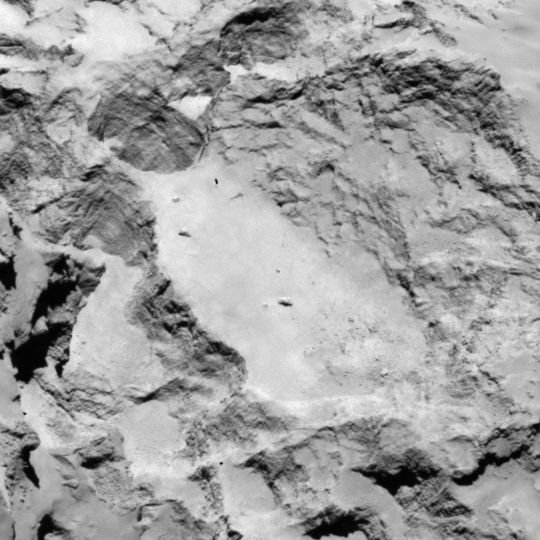
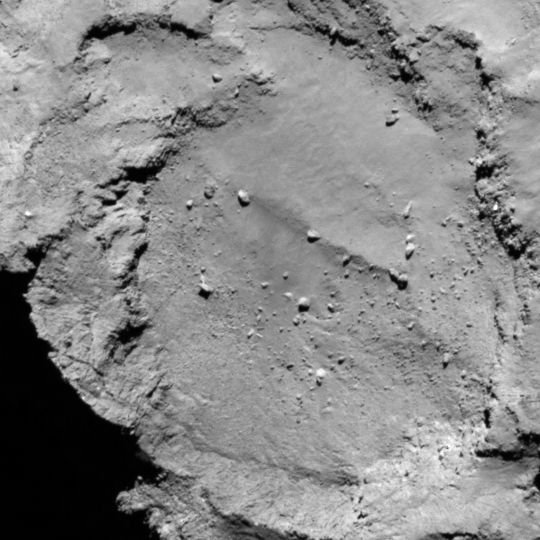

For each possible zone, important questions must be asked: Will the lander be able to maintain regular communications with Rosetta? How common are surface hazards such as large boulders, deep crevasses or steep slopes? Is there sufficient illumination for scientific operations and enough sunlight to recharge the lander’s batteries beyond its initial 64-hour lifetime, while not so much as to cause overheating?
To answer these questions, data acquired by Rosetta from about 100 km distance have been used, including high-resolution images of the surface, measurements of the comet’s surface temperature, and the pressure and density of gas around the nucleus. In addition, measurements of the comet’s orientation with respect to the Sun, its rotation, mass and surface gravity have been determined. All of these factors influence the technical feasibility of landing at any specific location on the comet.
This weekend, the Landing Site Selection Group (comprising engineers and scientists from Philae’s Science, Operations and Navigation Centre at CNES, the Lander Control Centre at DLR, scientists representing the Philae Lander instruments and ESA’s Rosetta team) met at CNES, Toulouse, to consider the available data and determine a shortlist of five candidate sites.
“This is the first time landing sites on a comet have been considered,” says Stephan Ulamec, Lander Manager at DLR.
“Based on the particular shape and the global topography of Comet 67P/ Churyumov-Gerasimenko, it is probably no surprise that many locations had to be ruled out. The candidate sites that we want to follow up for further analysis are thought to be technically feasible on the basis of a preliminary analysis of flight dynamics and other key issues – for example they all provide at least six hours of daylight per comet rotation and offer some flat terrain. Of course, every site has the potential for unique scientific discoveries.”
“The comet is very different to anything we’ve seen before, and exhibits spectacular features still to be understood,” says Jean-Pierre Bibring, a lead lander scientist and principal investigator of the CIVA instrument.
“The five chosen sites offer us the best chance to land and study the composition, internal structure and activity of the comet with the ten lander experiments.”
The sites were assigned a letter from an original pre-selection of 10 possible sites, which does not signify any ranking. Three sites (B, I and J) are located on the smaller of the two lobes of the comet and two sites (A and C) are located on the larger lobe.
Summary of the five candidate sites
Site A

Site A is an interesting region located on the larger lobe, but with a good view of the smaller lobe. The terrain between the two lobes is likely the source of some outgassing. Higher-resolution imaging is needed to study potential surface hazards such as small depressions and slopes, while the illumination conditions also need to be considered further.
.
Site B

Site B, within the crater-like structure on the smaller lobe, has a flat terrain and is thus considered relatively safe for landing, but illumination conditions may pose a problem when considering the longer-term science planning of Philae. Higher-resolution imaging will be needed to assess the boulder hazards in more detail. In addition, the boulders are also thought to represent more recently processed material and therefore this site may not be as pristine as some of the others.
.
Site C

Site C is located on the larger lobe and hosts a range of surface features including some brighter material, depressions, cliffs, hills and smooth plains, but higher-resolution imaging is needed to assess the risk of some of these features. It is also well illuminated, which would benefit the long-term scientific planning for Philae.
5833 Views
